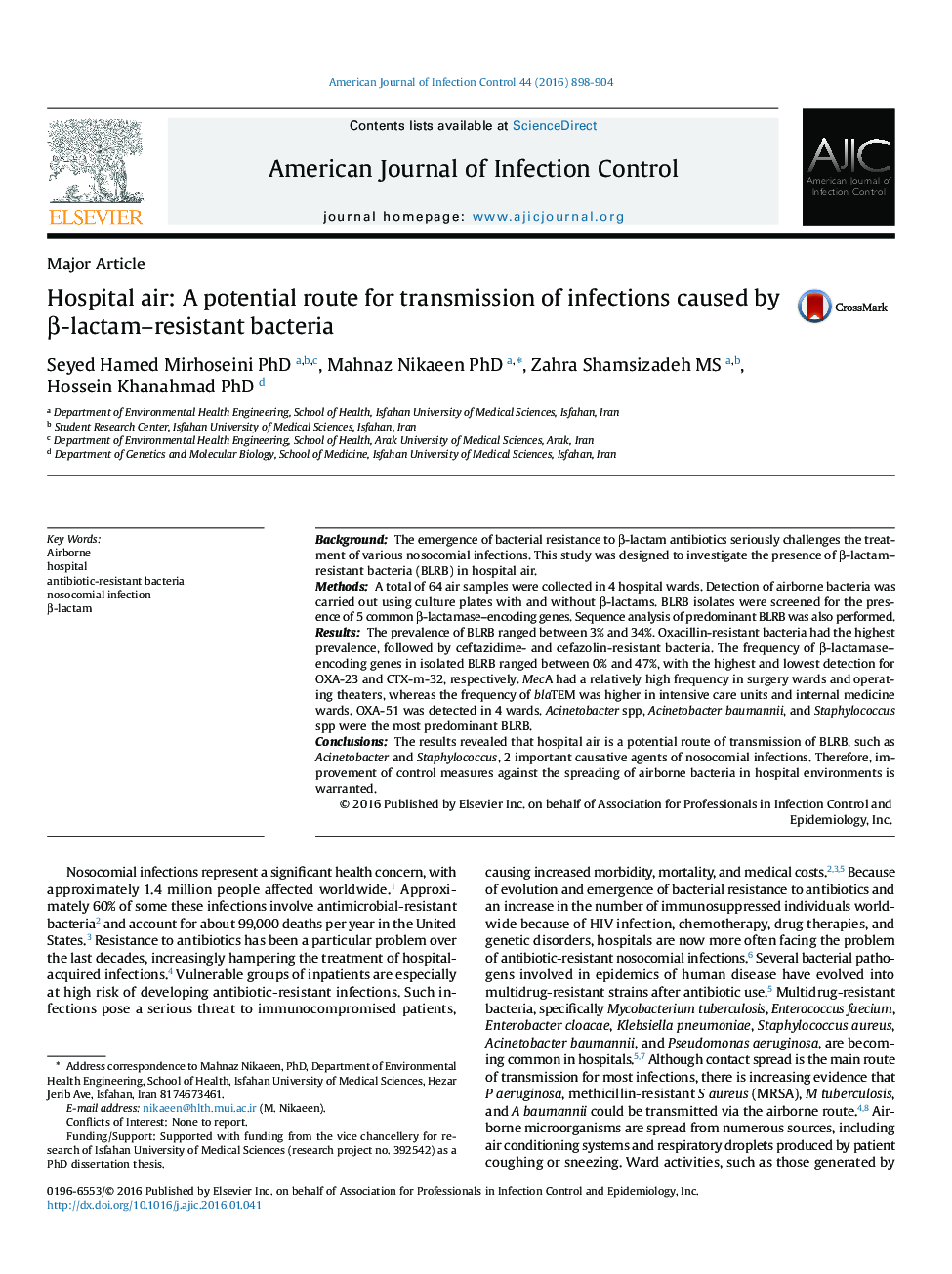| Article ID | Journal | Published Year | Pages | File Type |
|---|---|---|---|---|
| 5867199 | American Journal of Infection Control | 2016 | 7 Pages |
â¢The emergence of β-lactam-resistant bacteria is a major health concern.â¢There was a relatively high prevalence of 3 groups of airborne β-lactam-resistant bacteria in hospitals.â¢Beta-lactamase-encoding genes were detected with various frequencies in isolated β-lactam-resistant bacteria.â¢Staphylococcus and Acinetobacter were detected as the most predominant β-lactam-resistant bacteria.â¢Hospital air may play an important role in the transmission of β-lactam-resistant bacteria.
BackgroundThe emergence of bacterial resistance to β-lactam antibiotics seriously challenges the treatment of various nosocomial infections. This study was designed to investigate the presence of β-lactam-resistant bacteria (BLRB) in hospital air.MethodsA total of 64 air samples were collected in 4 hospital wards. Detection of airborne bacteria was carried out using culture plates with and without β-lactams. BLRB isolates were screened for the presence of 5 common β-lactamase-encoding genes. Sequence analysis of predominant BLRB was also performed.ResultsThe prevalence of BLRB ranged between 3% and 34%. Oxacillin-resistant bacteria had the highest prevalence, followed by ceftazidime- and cefazolin-resistant bacteria. The frequency of β-lactamase-encoding genes in isolated BLRB ranged between 0% and 47%, with the highest and lowest detection for OXA-23 and CTX-m-32, respectively. MecA had a relatively high frequency in surgery wards and operating theaters, whereas the frequency of blaTEM was higher in intensive care units and internal medicine wards. OXA-51 was detected in 4 wards. Acinetobacter spp, Acinetobacter baumannii, and Staphylococcus spp were the most predominant BLRB.ConclusionsThe results revealed that hospital air is a potential route of transmission of BLRB, such as Acinetobacter and Staphylococcus, 2 important causative agents of nosocomial infections. Therefore, improvement of control measures against the spreading of airborne bacteria in hospital environments is warranted.
